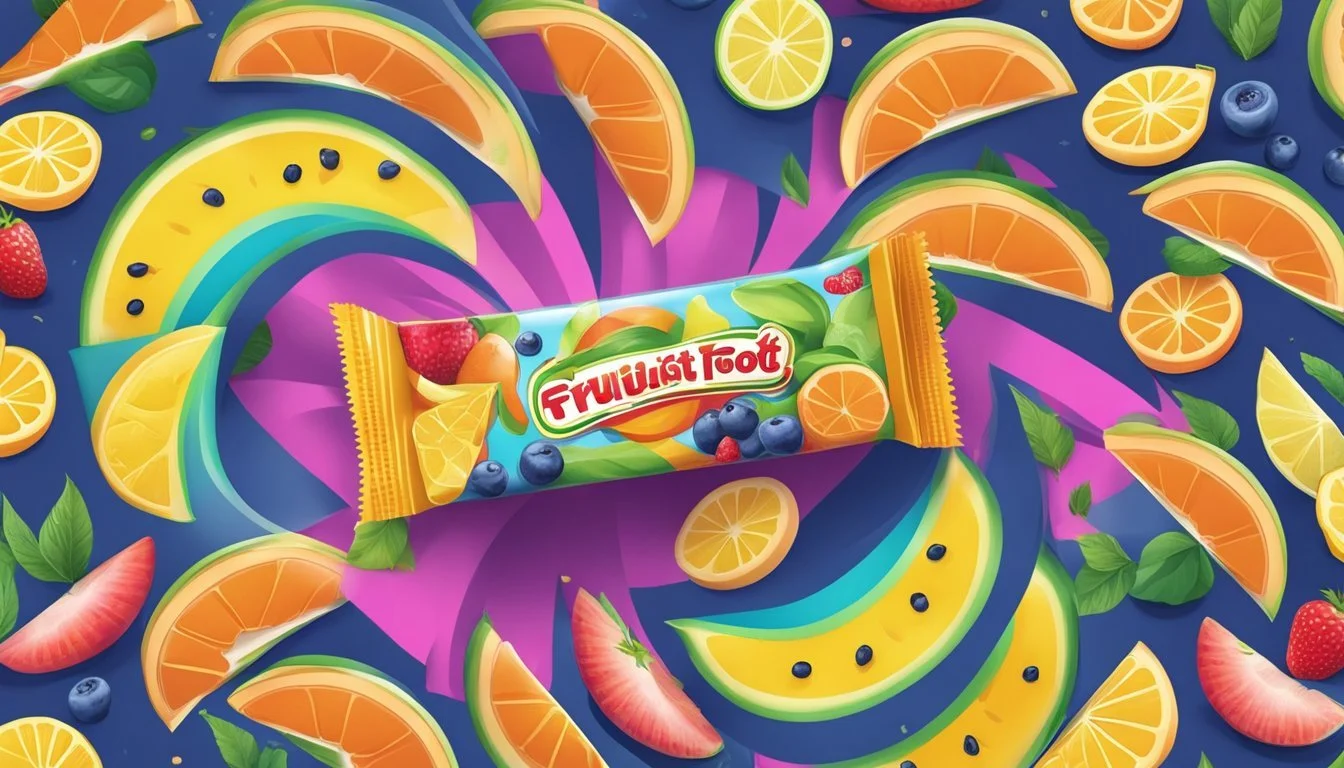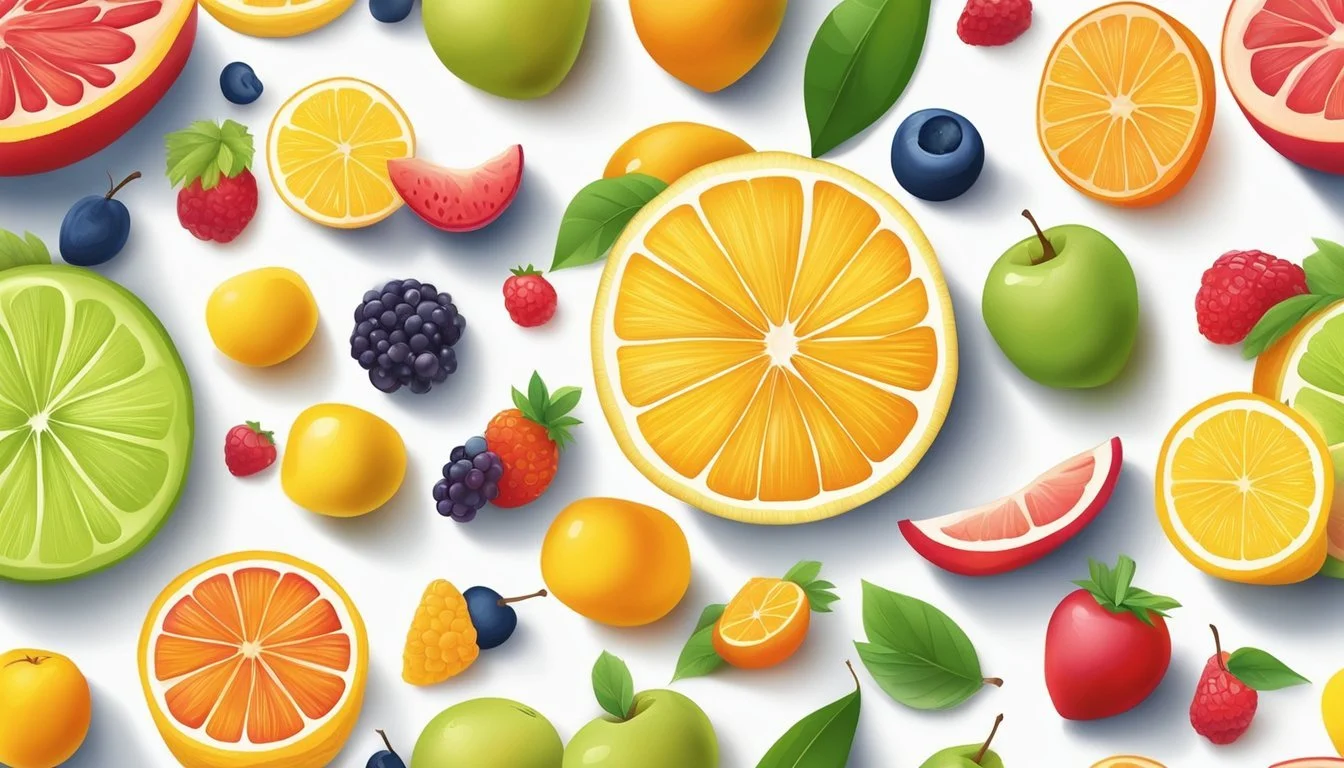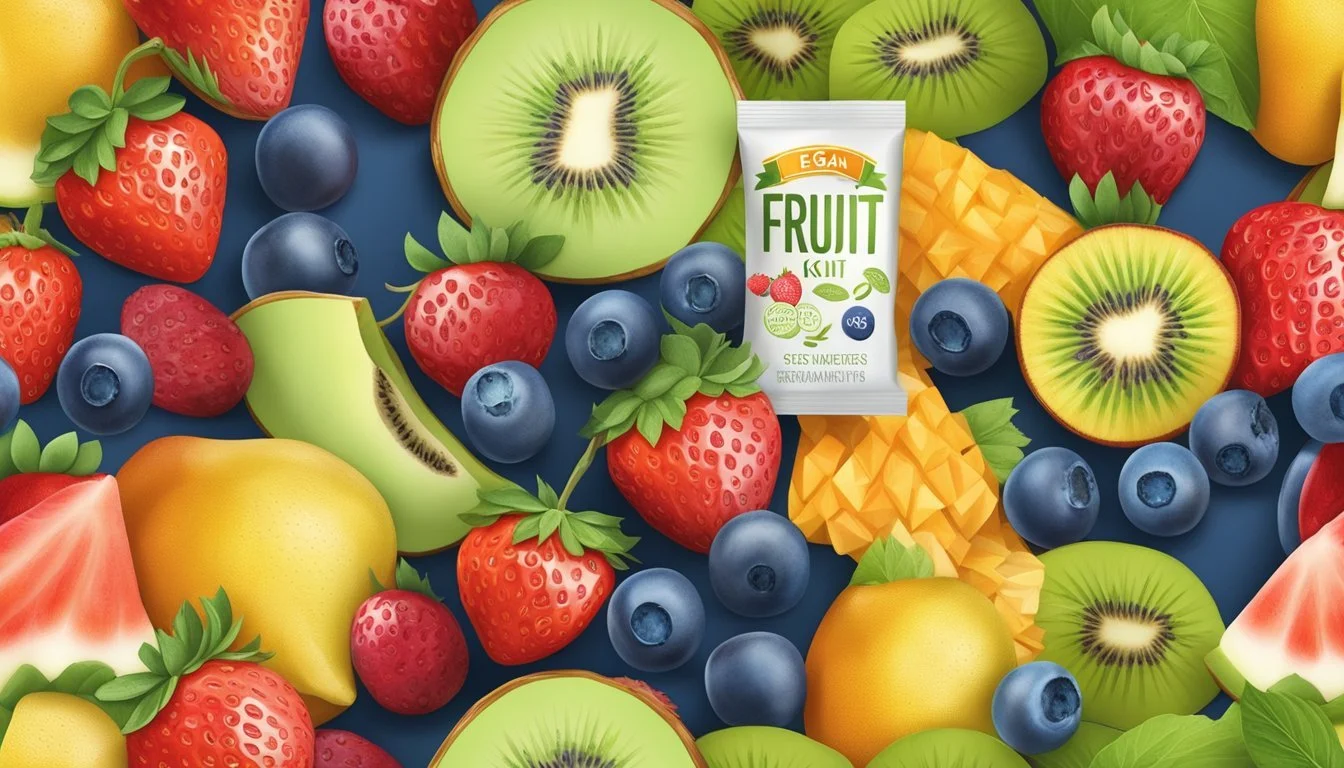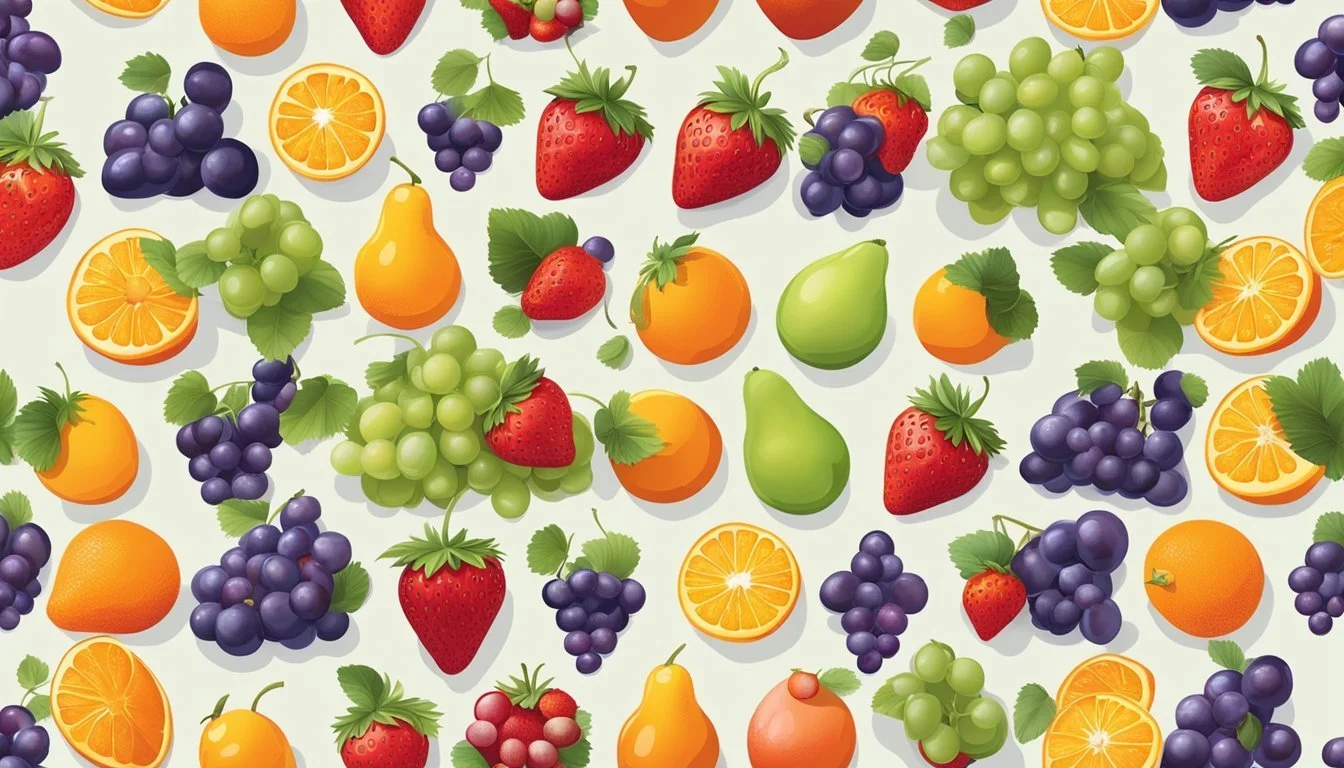Are Fruit by the Foot Vegan?
Unveiling the Ingredients
Fruit by the Foot, a popular snack with a fruity reputation, often graces the pantry shelves of both children and adults. This lengthy, chewy confection has prompted questions about its suitability for vegan diets—a lifestyle choice that excludes animal products in all forms. Vegans typically abstain from meat, dairy, eggs, and often scrutinize products for less obvious animal-derived ingredients.
Given that veganism also takes animal rights and ethical considerations into account, some vegans may choose to shun products that involve any form of animal exploitation, albeit indirectly. Therefore, the vegan status of Fruit (What wine goes well with fruit?) by the Foot can become complex when considering ingredients like sugar and food additives, which can have animal involvement in their production. The snack's ingredients list omits direct animal products, classifying it as vegan by some standards, yet the manufacturing process for certain components could be a point of contention for more stringent vegans.
Essentially, determining whether Fruit by the Foot aligns with vegan principles is not solely dependent on the presence of animal-derived ingredients. It also hinges on an individual's personal stance on processed ingredients and the broader implications of their production. This has resulted in a spectrum of opinions within the vegan community, with some endorsing the treat and others avoiding it in pursuit of a stricter adherence to vegan ethics.
Fruit by the Foot Overview
Fruit by the Foot is a fruit snack product that has been part of childhoods and snack times since its introduction. This section will glance over its history, the available product varieties, and the consumer base it appeals to.
History and Market Presence
Fruit by the Foot emerged in the early 1990s under the Betty Crocker brand, which is owned by General Mills, a dominant player in the food industry. Over time, it has established itself alongside its cousin snack, Fruit Roll-Ups, within the market. Its continuous presence on grocery shelves and in lunchboxes highlights its sustainable popularity and market penetration.
Product Varieties
The product is known for its variety pack options which often include flavors like strawberry and berry tie-dye. Each roll is approximately three feet long, providing a unique and fun eating experience by unwinding the snack from its backing. Recent years have also seen collaborations with other brands, leading to new flavor introductions such as Starburst-themed varieties.
Consumer Demographics
Initially marketed for children due to its playful presentation, Fruit by the Foot appeals to a wider age range including adults who savor nostalgia or seek a sweet treat. As for dietary preferences, the discussion of whether Fruit by the Foot is suitable for vegans denotes its wider consumption across various diet groups. While it does not contain direct animal products, some vegans might scrutinize ingredients like sugar and natural flavors in terms of production ethics and animal welfare.
Composition of Fruit by the Foot
To discern whether Fruit by the Foot aligns with vegan values, an analysis of its composition is required. It involves a closer look at the basic ingredients and their sources, controversial components, added artificial ingredients, and potential allergens that might concern specific dietary preferences.
Basic Ingredients and Their Sources
The primary ingredients of Fruit by the Foot are sugar, fruit purees such as pear puree concentrate, and various plant-based thickeners like carrageenan, xanthan gum, and locust bean gum. The sugar provides sweetness, while the fruit purees contribute to the fruity flavor of the snack. Thickeners are responsible for the chewy texture.
Controversial Components
Fruit by the Foot avoids the use of obvious animal products; however, certain components may raise questions. Though it doesn't contain gelatin, a common animal-derived ingredient, the sugar utilized may be processed with bone char, a concern for some vegans. Similarly, because the exact source of natural flavors isn’t always clear, they can also be controversial.
Artificial Additives
Regarding artificial ingredients, Fruit by the Foot incorporates various artificial flavors and artificial colors such as Red 40, Red 4, and Blue 1. These coloring agents are synthetic and are used to enhance the visual appeal of the product.
Common Allergens and Dietary Concerns
Fruit by the Foot is generally considered free from common allergens like gluten, dairy, and eggs. They can often cater to individuals with these specific dietary restrictions. However, it is always recommended for consumers to review the product's label to ensure it meets their dietary requirements.
Vegan Considerations
When evaluating whether Fruit by the Foot is suitable for a vegan diet, one must examine the ingredients, production process, compatibility with vegan dietary principles, and available alternatives.
Ingredients Analysis
Fruit by the Foot snacks predominantly feature ingredients such as sweeteners, fruit extracts, plant-based gums, and food dyes. However, certain ingredients raise concerns:
Sugar: May be processed with bone char, a non-vegan filtering agent.
Additives: Includes stabilizers and glycerides like monoglycerides and acetylated monoglycerides, which can be animal-derived.
Natural and artificial flavors: Can be sourced from both plant and animal origins. Without specific disclosure from the manufacturer, their vegan status is uncertain.
Preservatives: Common in processed foods, not necessarily non-vegan but may be a concern for some adhering to a strict plant-based diet.
Production and Processing
During the production of ingredients like sugar, bone char—sourced from animal bones—can be used. This poses an ethical concern for vegans who avoid products linked to any form of animal cruelty or exploitation.
Vegan Diet Compatibility
Vegans follow a diet excluding animal products for various reasons:
Dietary vegans focus on health and may accept Fruit by the Foot if no direct animal products are included.
Ethical vegans consider broader implications such as animal testing and indirect animal sources, possibly rejecting this snack due to the ambiguous nature of certain ingredients and their processing methods.
Alternative Options and Substitutes
For those seeking alternatives to Fruit by the Foot:
Homemade fruit snacks: Using fruit puree and vegan-friendly additives can serve as a nutritious substitute.
Vegan-certified products: Looking for snacks with explicit vegan labeling can ensure compliance with personal dietary choices.
Each individual's interpretation of what aligns with a vegan lifestyle may vary, making it vital to consider the specific practices behind product manufacturing and the origin of ingredients.
Health and Nutrition Facts
Fruit by the Foot is a product whose nutritional value and ingredients have sparked interest among those mindful of their dietary choices. This section examines the essential nutritional content of Fruit by the Foot, alongside the potential health benefits and potential risks associated with its consumption.
Nutritional Content Overview
When analyzing the nutritional content of Fruit by the Foot, it is important to look at the ingredients list as well as the nutrition facts label. Typical ingredients include:
Sugars: Such as sugar and corn syrup, which are primary components.
Sweeteners: Maltodextrin, a sweet polysaccharide used as a food additive.
Fruit extracts: Providing the fruity flavor.
Additives: Such as citric acid for tartness, sodium citrate for flavor preservation, and ascorbic acid (vitamin C).
Gelling Agents: Like carrageenan, to achieve the chewy texture.
A concise summary of the nutritional content per serving can be laid out as follows:
Nutrient Amount per Serving Calories 80 kcal Total Fat 0g Sodium 50 mg Total Carbohydrates 19g Sugars 10g Includes Added Sugars 9g Protein 0g Vitamin C (ascorbic acid) 10% of DV*
*DV: Daily Value
Potential Health Benefits and Risks
While Fruit by the Foot contains vitamin C (ascorbic acid), which is beneficial to the immune system, the health implications of its consumption are mixed. In moderation, and as part of a diverse diet, the vitamin C present in this snack can contribute to the daily nutritional requirements.
However, high sugar content poses potential health risks. Given that a single serving contains a significant amount of added sugars, frequent consumption can lead to health issues such as weight gain and tooth decay. The inclusion of maltodextrin and corn syrup, both of which are high-glycemic ingredients, may affect blood sugar levels, making Fruit by the Foot less ideal for individuals with specific dietary restrictions or those managing blood sugar-related conditions.
Individuals looking to maintain a balanced diet should consider these facts when determining the role of snacks like Fruit by the Foot in their consumption habits.
Environmental and Ethical Concerns
When evaluating whether Fruit by the Foot products align with vegan standards, it is important to consider not just the ingredients but also the environmental and ethical implications of their production and sourcing.
Sustainability and Sourcing
The production of Fruit by the Foot implicates several sustainability concerns. Specifically, the source of the sugar, which may involve energy-intensive production and transportation, raises questions. The snack's manufacturing process might not prioritize sustainable practices. Moreover, ingredients like palm oil, which is often linked to deforestation and the exploitation of workers, require scrutiny. Organizations like the Roundtable on Sustainable Palm Oil provide certification for sustainably sourced palm oil, which consumers can look for.
Ethical Practices and Certifications
Ethical considerations in food production include the treatment of workers and the presence of animal exploitation in the supply chain. While PETA and the Vegetarian Resource Group often offer certifications indicating no animal products were used, they also look at broader ethical implications. This means that Fruit by the Foot's production should also be free from any form of animal cruelty or exploitation to be rightfully certified.
Potential Controversial Ingredients
Several controversial ingredients may have origins in animal products or raise concerns for vegans:
Sugar: If processed using bone char, a derivative from animal bones, it is no longer vegan-friendly.
Gelatin: Common in snacks, gelatin is an animal product and therefore not vegan. However, Fruit by the Foot has not been reported to contain gelatin.
Coloring agents: Artificial colors, while not necessarily of animal origin, are often tested on animals, which concerns ethical vegans. The FDA approves such coloring agents, but that does not equate to being cruelty-free.
Flavorings: Natural flavorings might come from animal or plant sources; their exact origin can be ambiguous without official confirmation.
Carmine: A red dye made from insects, not present in Fruit by the Foot but notable as a controversial ingredient for vegans in other products.
Preservatives: Can be of concern if their safety evaluation involved animal testing.
It is the responsibility of the manufacturer and the discretion of the consumer to consider these aspects when determining if a product fits into a vegan lifestyle.
Regulatory Compliance and Labeling
When evaluating whether Fruit by the Foot products are vegan, one must carefully consider the standards for compliance and labeling as set by various regulatory bodies, as they mandate the disclosure of ingredients and the approval process for food products.
Ingredient Disclosure Policies
Regulatory entities enforce policies that require manufacturers to list all ingredients on their packaging, offering transparency about a product's contents. The list must disclose if any animal products or by-products are used, aiding consumers in identifying vegan options. For vegan labeling, products must not contain any animal-derived ingredients, which includes avoiding dairy, eggs, honey, or gelatin.
FDA Regulations and Approvals
The U.S. Food and Drug Administration (FDA) oversees food labeling and ensures that companies adhere to specific guidelines when labeling their products. The FDA's role includes regulating claims on packaging to protect consumers from misleading information. Ingredients must be approved by the FDA for human consumption, and any additives found within Fruit by the Foot would need to comply with these regulatory standards.
Global Standards and Variations
Globally, labeling requirements vary significantly. In the European Union, for instance, vegan labeling is a legal imperative. Companies must display a statement confirming the vegan status, including a vegan logo or certification. As standards shift across regions, companies exporting products like Fruit by the Foot must adapt their labeling to align with these global differences in regulatory compliance.
Consumer Perception and Brand Reputation
In the debate over whether Fruit by the Foot is vegan, consumer perception and brand reputation play pivotal roles. Shoppers’ values, including those of ethical vegans, greatly influence market dynamics, while companies’ responses to feedback often shape their public reputations.
Public Sentiment and Feedback
Public sentiment toward Fruit by the Foot's vegan status is multifaceted. Consumers frequently engage in discussions over the brand’s ingredients, especially concerning controversial additives such as artificial colors, and their stance on animal testing. Feedback varies from positive endorsements recognizing the absence of direct animal-derived ingredients to criticisms by ethical vegans who question the ethical implications of certain ingredients.
Key points from consumer discussions:
Ingredients: Focus on whether all components, including artificial colors, align with vegan principles.
Company Ethics: Discussion about the brand's involvement with animal testing indirectly through its supply chain.
Feedback channels like social media and product review sections are abuzz with varying degrees of consumer satisfaction and concern, highlighting a complex relationship between the company and its consumers.
Activism and Company Response
Activist groups and ethical vegans scrutinize food companies and their products, urging transparency and ethical practices. They often prompt Fruit by the Foot's parent company to consider the broader impact of its product beyond just consumption, such as environmental effects and animal welfare.
Company responses to activism can be seen in:
Policies: Public statements or changes to ingredient sourcing and testing.
Transparency: Efforts to clearly communicate with consumers about product ingredients and ethical considerations.
While some companies may actively embrace changes to improve their ethical stance, others might provide minimal responses, which then impact their market reputation.
Market Alternatives and Competing Products
When considering vegan fruit snacks, it is important to note that there are several market alternatives to Fruit by the Foot. These options vary from other branded commercial products to emerging trends in the vegan snack sector, including a surge in homemade fruit snack recipes.
Comparison with Other Vegan Fruit Snacks
Many competing products offer similar treats that cater to vegan dietary requirements. Starburst, for example, has been reported to offer a selection of vegan fruit chews, providing a variety of flavors like lemon. Another notable competitor is the variety pack sector, where mixed fruit snacks of different brands come together to provide multiple taste options, increasing choice for consumers looking for plant-based candies.
Emerging Brands and Trends
The market for vegan snacks has witnessed the entry of emerging brands that are capitalizing on the growing demand for plant-based alternatives. These newcomers typically emphasize natural ingredients and often utilize fruit puree as a base for their products. Their offerings are not only aligned with vegan standards but also reach out to the broader vegetarian community.
Homemade Vegan Fruit Snack Recipes
For those inclined towards DIY options, there are countless recipes available that guide consumers in making their own vegan fruit snacks at home. These homemade recipes often involve simple ingredients such as fruit puree, natural sweeteners, and vegan-friendly gelling agents to create snacks that can rival commercial products in terms of flavor and ethical standards.
Future Outlook
As the demand for vegan products increases, the confectionery market is rapidly adapting with new innovations and anticipated shifts. Consumers play a pivotal role through advocacy, driving further research and development in this sector.
Innovation in Vegan Confectionery
The confectionery industry has recognized the rising consumer interest in vegan products. Leading the way, companies are exploring the use of plant-based alternatives and novel ingredients to create vegan-friendly treats that mimic traditional confectionery. Crucial advancements are anticipated in flavour, texture, and variety, ensuring that these options are not only ethical but also appealing in terms of taste and experience.
Predicted Market Shifts
Shifts in the market are projected as consumer preferences evolve. Statistical analysis suggests an upward trajectory in vegan confectionery sales, with a predicted surge in market share and product availability. As mainstream retailers expand their vegan ranges, niche products like plant-based seafood replacements could potentially become commonplace, reflecting the diversification of vegan options.
2024 Forecast: Increase in demand for vegan sweets, including Fruit by the Foot.
Growth Drivers: Ethical consumerism, health awareness, environmental concerns.
Consumer Advocacy and Future Research
Consumer advocacy has a direct impact on the growth of vegan confectionery. Vocal consumers often spur companies to consider animal welfare in their sourcing and processing methods. Future research is likely to focus on sustainable practices and transparency, with a clear labeling system to inform consumers about the origins and processing of ingredients like sugars and artificial colors.
Advocacy Goals:
Enhanced ethical sourcing
Reduction of animal testing
Comprehensive product labeling
Through persistent advocacy and research, consumers and manufacturers alike contribute to the ethical evolution of the confectionery industry.











